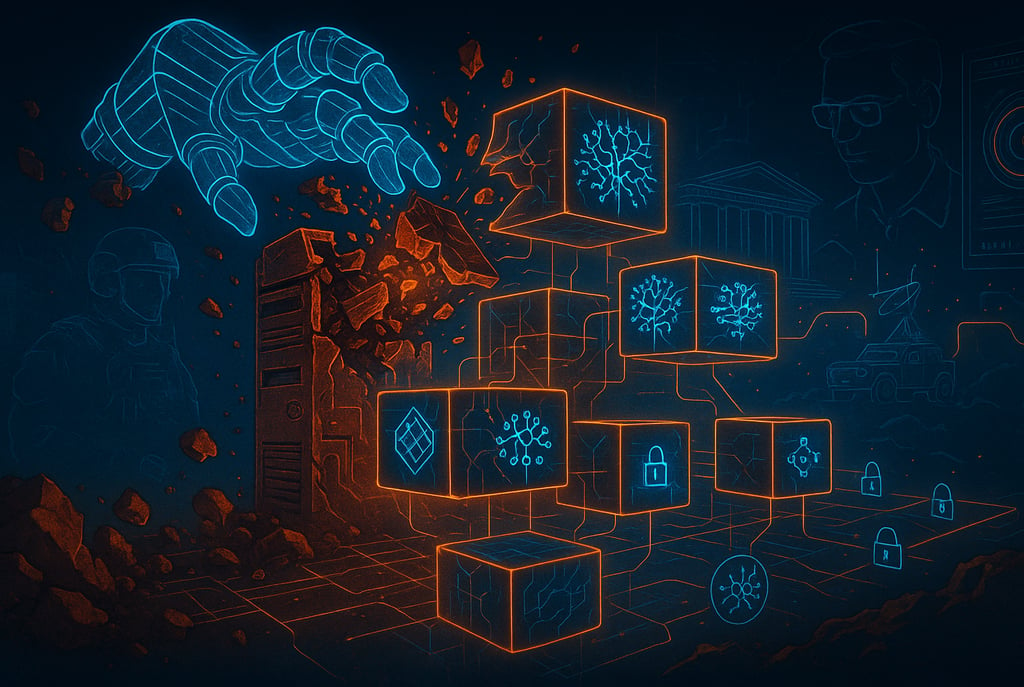Turning Defense Integration Into Less of a Dumpster Fire: How AI is Finally Showing Up to Work
A sharp, satirical takedown of the DoD's decades-long integration dysfunction, this post explores how AI-driven observability and modular architectures are finally putting an end to vendor lock-in, stovepipe systems, and PowerPoint-driven transformation theater. Modular Misfits offers a smarter, faster, and far more entertaining approach to fixing what’s broken.
Tony Maida
5/8/20252 min read


Once upon a DoD contract, someone thought it was a great idea to build a million-dollar system that couldn’t talk to the other million-dollar systems. And thus, integration hell was born. For decades, defense integration has meant throwing bodies, binders, and brittle XML schemas at problems that should have been solved with basic APIs and a dash of common sense. But don’t worry, AI has finally decided to clock in.
Let’s be honest. Traditional integration in the DoD is the equivalent of duct-taping a fax machine to a blockchain and calling it "interoperable." Every program office swears they’re data-centric, modular, and “ready for the future,” yet their systems still behave like Cold War relics in a LAN party. And here comes AI, not your overhyped, VC-funded chatbot, but actual AI-powered observability, dynamic data routing, and autonomous API stitching that might actually make warfighter systems, you know, function together.
Here’s the twist: you can’t fix spaghetti code with spaghetti leadership. That’s where Modular Misfits rolls in like the raccoons of innovation we are, sniffing out stale architectures and replacing them with plug-and-play Lego bricks built on Zero Trust, federated AI, and open standards that actually mean something. Imagine systems that monitor their own behavior, learn from usage patterns, and adapt without requiring a 600-page CONOPS written by a retired colonel who still thinks "cloud" is a weather forecast.
We don’t do monolithic, and we sure as hell don’t do proprietary black boxes with decade-long lock-in and 3-ring binders as documentation. Our approach? Real-time AI observability stitched through a mesh that treats data like a first-class citizen, not a casualty of acquisition malpractice. Your model’s drifting? We see it. Your decision chain is breaking under load? We fix it. Your stovepipe system is pouting in the corner? We shame it into compliance.
So, while the rest of the DoD fumbles through PowerPoints promising “future-ready digital transformation,” Modular Misfits is already in the field, wiring up disconnected silos, retrofitting edge nodes, and politely telling legacy vendors where they can shove their hardcoded interfaces. This isn’t transformation through procurement theater. It’s evolution through AI that actually works.
Integration shouldn’t be a tragedy. With AI, it can be a dark comedy, one where the punchline is operational advantage instead of another GAO report.
Want your systems to stop acting like jealous exes refusing to speak to each other? Call the Misfits. We make broken DoD tech play nice, or at least behave long enough to finish the mission.
